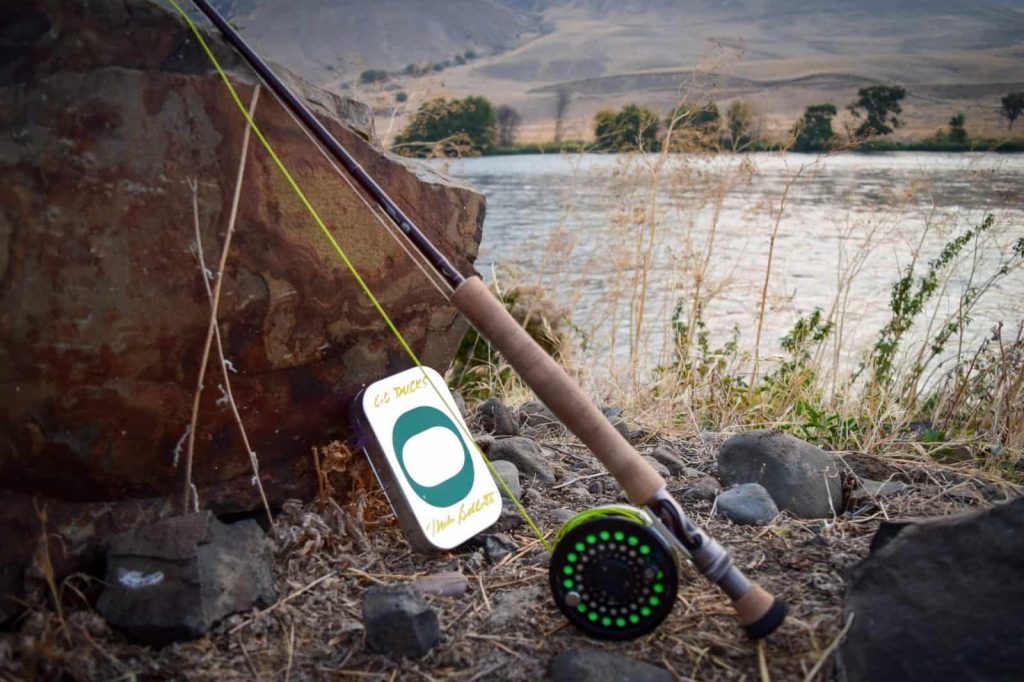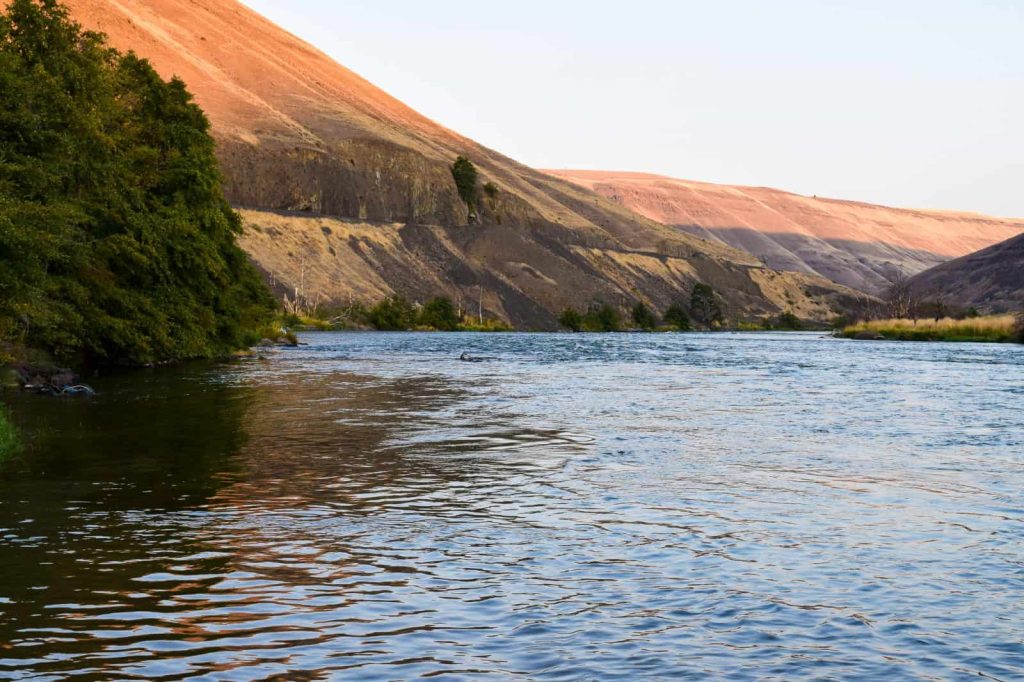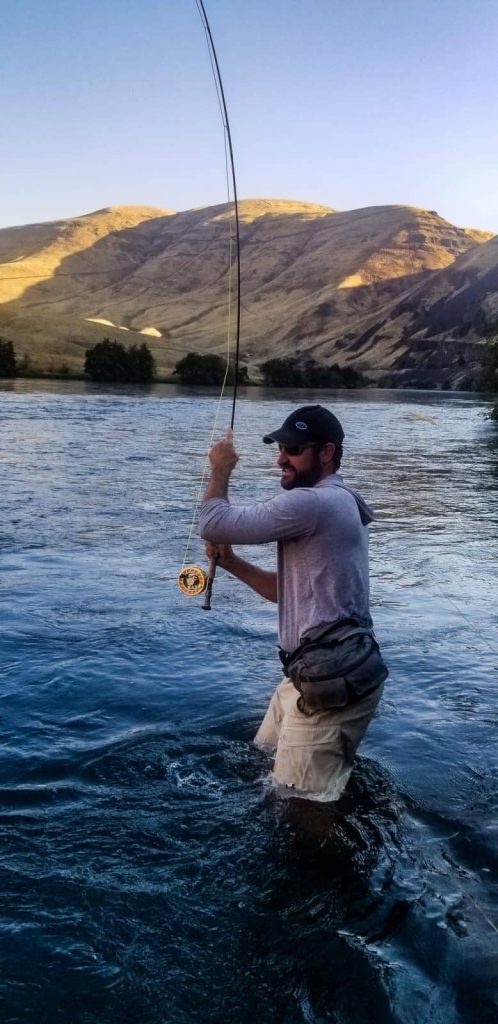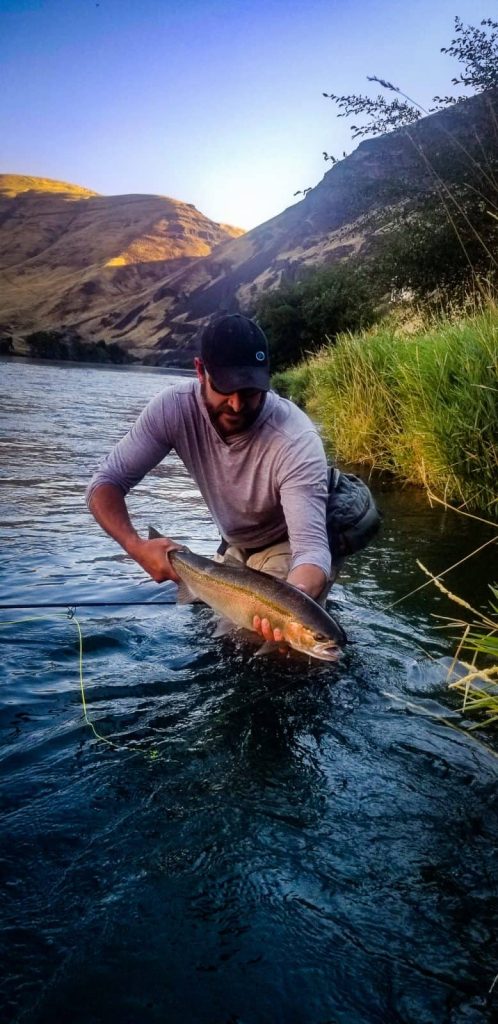Single-Handed Spey and the “Right Cross/Left Hook/Right Cross” Combination

Casting is all about problem solving, and wading on greasy substrate up to your elbows in heavy current, with a 30 mph crosswind, presents ample problems.
“Which run do you want to fish first?” asked Rich, my old friend and host.
My answer was quick and unwavering. “The Fly Water.”
The lie, like an aptly named “Elk Creek” or “Fish Lake”, lives up to its basic moniker. Here, the river flows at that ideal pace preferred by resting steelhead. At the head of the run, several submerged boulders provide further respite from the current and add complexity to the swung fly presentation. Controlling fly speed and course through these variable currents requires attention to detail; subtle mends throughout the swing to keep the fly undulating on a path to the hang down. The guts of the run are just below the boulders. The fish tend to be bitey here and the anticipation of a tight line take builds with each swing. With unbridled enthusiasm, I followed my friend up the game trail, waded into the top of my favorite piece of steelhead water on the planet, and began working out line with single-handed Spey casts.

I resumed the familiar groove of probing a steelhead run, envisioning my favorite wet fly rising up through the water column as I worked my way downriver. As my fly approached the definitive bucket, I performed a self-check, loosening the drag on my reel. Using a re-directional cast, the fly landed short of the intended seam and I picked up my line, watched my backcast, and threw a long double-haul out to the edge of the main current. The fly just came under tension as my swing began when a fish took and zapped me with a stout dose of adrenaline. Line began to spin from the reel and I tightened the drag as the graphite shivered with deep pulses. The fish made a powerful run downstream and breached in front of my friend. With the fish firmly hooked, I gave my buddy a little whistle. “Steelhead?” Rich asked. Yep.

I applied maximum pressure with the 10’ 8 weight and with Rich’s help, landed the fish on a precarious bank. She was a gorgeous B-run native hen. I didn’t need a fish on this trip but I was blessed with one, an amazing one, 15 minutes into the first run and my fascination with steelhead was rekindled.

I first learned to Spey cast in the late 1990’s with a 14-foot 8 weight. While this rod was a forgiving learning tool, like a set of training wheels, I soon realized that the experience of catching summer run steelhead on the Columbia tributaries paled in comparison to the throb of a 9-foot 7 or 8 weight. I settled on an 11’ 8 weight for awhile (little did I know, but I was fishing what would be known as a “switch rod” a decade later) and while this configuration seemed like the ideal compromise for fishing a floating line on the vegetation-lined banks, I eventually returned to the single-handed rod. Now armed with a litany of casts, I was a far more effective steelhead angler, and when my wanderlust and career took me across continents into all manner of watery realms, I realized that I had a foundation of creative casts for any situation. Casting is all about problem solving, and wading on greasy substrate up to your elbows in heavy current, with a 30 mph crosswind, presents ample problems.

WHERE ARE ALL THE SINGLE SWINGERS?
We traversed the Deschutes, Grande Ronde, and Clearwater on our loop. As a guide and owner of a fly rod business, I pay close attention to the gear in rod racks on trucks and in boats. Other than a couple of rods rigged up for nymphing, there were NO single-handed fly rods being employed for the swung fly presentation on any of these famed steelhead rivers. While personal preference certainly plays a role, there appears to be a deepening dearth in the use of the single-hander amongst Columbia summer-run steelhead anglers. I believe that this is partly due to a lack of understanding of the application of Spey moves with the single-handed rod. Yes, casting and fishing effectively with a single-handed rod is more difficult than with a Spey rod, but with the development of a few moves, an angler can cover big water with a floating line, reap the rewards of a big fish on light tackle, and become a more versatile, well-rounded fly angler.

THE MOVES
The Snap-T cast is a quick re-directional move that repositions the line from downstream, to directly in front of the angler. With enough practice, the Snap T can performed off the opposite shoulder to compensate for current, and more poignantly, wind direction. Once competent from either shoulder, the Snap T is the only re-directional cast that an angler needs. https://www.youtube.com/watch?v=X_-GO3zD98M
The Snap T, coupled with a line haul, is a very powerful shot that is useful in any fishing scenario. Where greater distance is required, and back cast room allows, pick the line up just after it lands and launch a big, water-loaded double haul. Paired with a heavily weighted forward fly line (like Airflo’s Bask/Musky taper or an Outbound) a practiced caster using a Snap T/Water-Loaded Double Haul combination, thrown either forehand or backhand, can tackle any distance casting dilemma. This combo is the Right Cross/Left Hook/Right Cross of fly casting https://www.youtube.com/watch?v=dpq96L_-fqw


